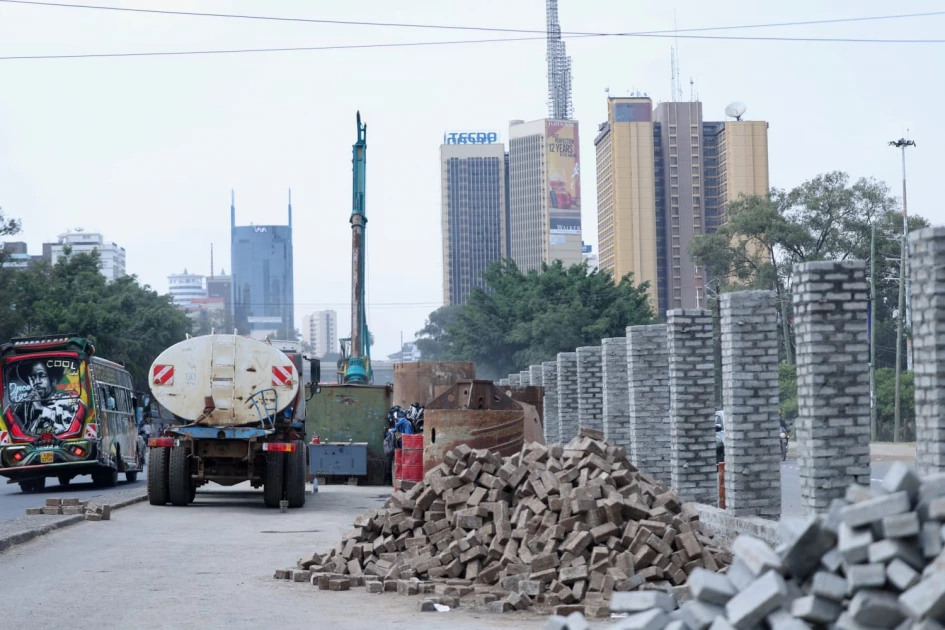KURA responds to Kenyans' question: 'Nani anajenga nyumba Kenyatta Avenue?'

Pillars built along Kenyatta Avenue, Nairobi.

Audio By Carbonatix
Cheeky and hilarious video clips flooded online platforms including Facebook, X, and TikTok, with many Kenyans posing the question, “Nani amejenga nyumba Kenyatta Avenue?” (Who has built a house on Kenyatta Avenue?). Others joked that it was time to apply for affordable housing in the heart of the Central Business District.
In a witty and humorous response, the Kenya Urban Roads Authority (KURA) replied: “Surely, surely, hii si nyumba. Aje sasa watu wangu? Tunajenga viaduct.” (Surely, surely, this is not a house. Come on, my people, we are building a viaduct.)
The agency clarified that the pillars are part of the ongoing construction of a viaduct, an elevated road designed to link Valley Road, Ngong Road, and Haile Selassie Avenue. Once complete, motorists coming from the Central Business District will be able to use the viaduct to connect directly to Ngong Road near the Kenya National Library Service, easing traffic congestion and improving flow across Nairobi.
Responding directly to the cheeky but necessary question, Engineer Benjamin Asin, an Assistant Director at KURA, clarified the situation while standing at the section of Kenyatta Avenue where the viaduct will be constructed.
“I have seen many questions. Watu wanauliza, ‘Nani anajenga nyumba kwa barabara?’ I just want to clarify, these are not houses. They are temporary hoarding structures.We are trying to protect the working environment, the construction area, and also the motorists. As you realise, we are building a viaduct, which requires heavy machinery.”
An artistic impression shared by KURA illustrates how the viaduct will ease the notorious traffic snarl-up along Valley Road and Kenyatta Avenue.
An artistic impression shared by KURA illustrating the viaduct.
This viaduct forms part of the broader Valley Road–Kenyatta Avenue/Ngong/Nyerere Road Interchange and Upper Hill–Haile Selassie Overpass project, which includes major road network upgrades across Nairobi.
Initially launched on 17th September 2020, the project stalled due to non-payment of contractors. However, following a securitisation intervention approved in April 2025, works have resumed with a revised completion date of 17th December 2026.
“The viaduct connects from Valley Road to Kenyatta Avenue. Through traffic will no longer interfere at the junctions. Gridlocks are going to be reduced, and there will be no conflicting traffic. You realise this is an active, very busy area, and we need reliable protection. These structures will be removed once the works are completed,” added Engineer Asin.
When President William Ruto assumed office, his administration reported inheriting Ksh.175 billion in pending bills owed to 580 road contractors.
Many of these debts had remained unpaid for years—some dating back to 2016—resulting in abandoned projects, business closures, and significant job losses. As a result, roads intended to link communities to essential services such as hospitals, schools, and markets were left incomplete, creating safety risks and hampering local economies.
Constrained by limited fiscal space, the government turned to a debt-avoidance strategy known as securitisation.
By July 2025, over 393 out of 580 stalled road projects had resumed across the country.
Some of the heavy machinery can be seen at Kenyatta Avenue, where a strong safety wall was constructed immediately after the contractor resumed work.
Some of the heavy machinery can be seen at Kenyatta Avenue after the contractor resumed work.



Leave a Comment